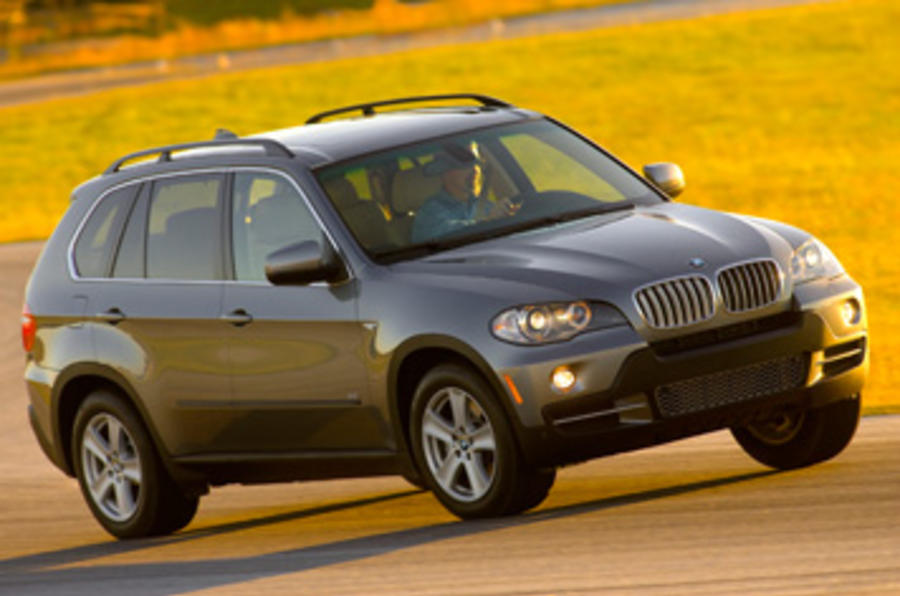What is it?
The X5 evolved. Evolution is the key word behind the new X5. Given the success of the previous model, that’s probably not surprising. The basic look is quite familiar: it still has a little ducktail on the tailgate and exhausts that poke from the rear bumper, while the front bumper still has that silly chunk of dark grey plastic masquerading as a nudge bar.
The proportions are different, though. The new car is 5cm taller and 6cm wider than before, but it’s an overall length increase that most changes its character. The new X5 is nearly 20cm longer than before, with 15cm of that going straight into the wheelbase, allowing the option of a third row of seats.
There are neat touches, too. It’s handsome, with some new-style BMW styling etched into a familiar shape. But it’s not just the styling that’s evolutionary. The formula’s much the same as well. Despite the size increase, the X5 remains an executive SUV. Believe it or not, it’s even more road-oriented than the first-generation X5.
What's it like?
Lovely to drive, even though the V8 version that we tested weighs 2400kg and feels all of that. It’s a solid thing that barrels down the road with authority. The longer wheelbase improves the ride quality and smothers road imperfections deftly. It’s particularly impressive given that the standard wheels are 18-inchers on run-flat tyres. High-speed stability is also excellent - the X5 feels more like a large saloon than an SUV.
For the first time since 1961, a BMW that gets double wishbone front suspension (the rear is an evolution of the old aluminium four-link). BMW coyly says that the new suspension reduces understeer, but it’s a sticky question for the company, given that it has put so much emphasis on struts for the past 40 years. How do you say the new system’s better without putting a downer on the rest of the range? Don’t be surprised to find double wishbones on other BMWs in future.
Whatever the justification, it works brilliantly. On narrow, rain-soaked roads around the Spartanburg factory in South Carolina USA, it should have been challenged. But even without the optional Sport package (electronic dampers, trick anti-roll bars, 19-inch wheels), the X5 can be placed accurately. Throw it into tight corners and the front bites with unexpected tenacity. It’s remarkable, and through curved transitions it is easy to build a flow with it - there’s little disconcerting weight transfer. Ultimately, it’s the front that breaks loose first, but the overall feel is impressively neutral. Roll resistance is probably best in class, and the steering is excellent – linear, accurate and with good feel.
So far we’ve only driven the 4.8-litre V8, which gets a standard six-speed automatic ZF gearbox. It’s good for 0-60mph in 6.4sec – only 0.3sec down on the old 4.8iS, despite a near-200kg weight increase.
But the X5 always handled well, and always had enough power. The real change is in what the new dimensions mean. The X5’s interior is handsome and comfortable, with a particularly good driving position that is halfway between that of a Land Rover Discovery and a ‘real’ BMW, and loads of space in the front and back.
The materials used in the cabin are first rate and the fit and finish on our test car was top notch. The only two sour notes are on the centre console, where both iDrive and a fussy, over-designed gearlever have found a home (BMW says it gives more centre console space, but we’re inclined to think it’s weirdness for its own sake), and in the boot. Yes, it’s (just) larger than that of a 5-series Touring, but with it comes an unfortunate necessity of market demand: two optional seats in the boot. They’re little more than scale models of rear seats, and even BMW says no one over 5ft 5in tall should use them. In truth, no human should, and because they don’t have Isofix attachments they are, in a word, useless. And at $1200 in the US (that’s more than £600 in our money) they’re not cheap.

















Add your comment